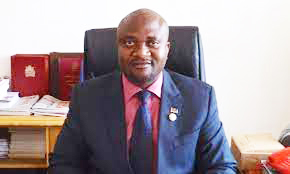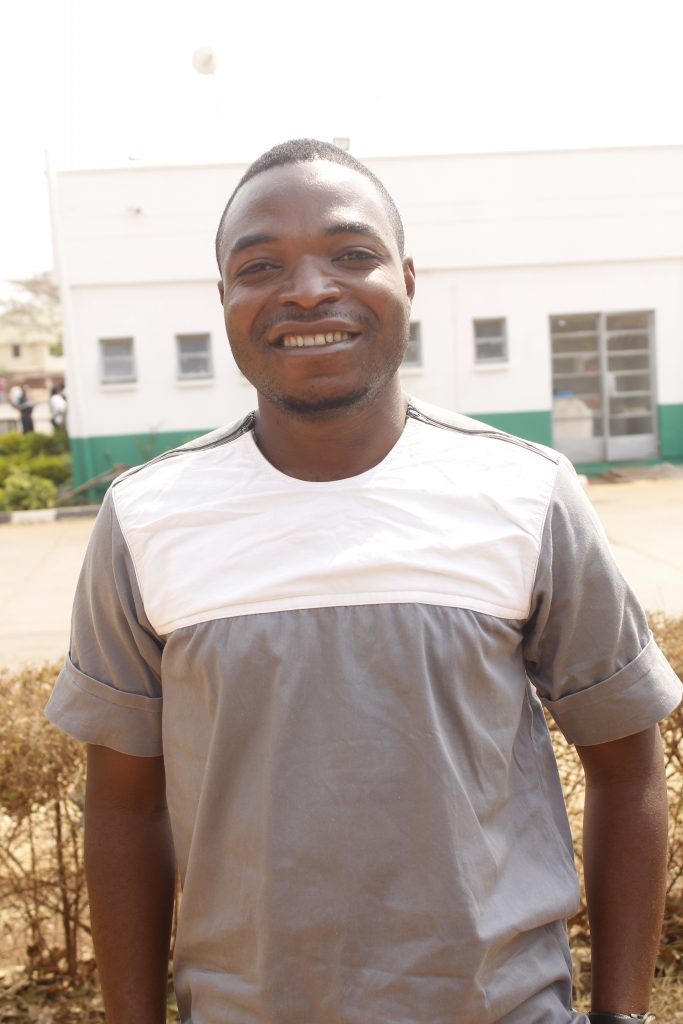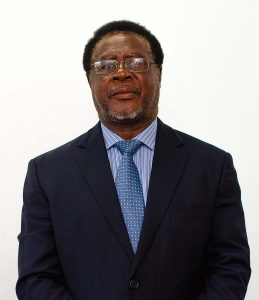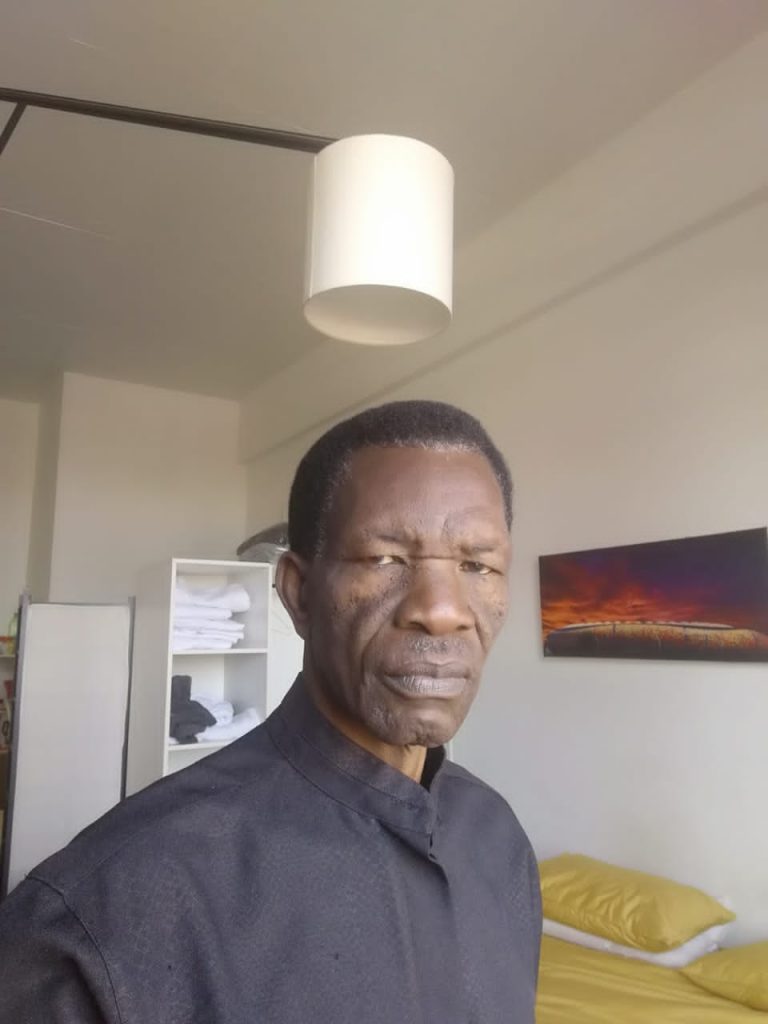
Mining & Trade News
Malawi Online News
Top Stories

Energy
Minister cautions IPPs over delays in execution of power projectsSeptember 09, 2022 / Bester Kayaye
Malawi’s Minister of Energy Ibrahim Matola has cautioned Independent Power Producers (IPP) over “unrealistic delays in implementing various power generation projects despite being given a consent to execute the projects.”
Matola made the caution at the launch of the Malawi Power Industry Compendium, which exhibits potential power generation projects in Malawi, by Power Market Limited (PML).
The Minister said there are some power purchase agreements signed as early as 2019 whose respective projects are yet to start.
Matola said: “I wish to express my sadness with the delays that some IPPs are making once given a go ahead to develop a power project. It does not make sense to hold on to agreements at the expense of the country that desperately needs electricity.”
“Therefore, am asking PML to review all these idle Power Purchase Agreements and find a way of making the holders accountable and responsible. Otherwise, it will be good for the investors to relinquish the agreements so that other potential investors are allowed to develop the sites.”
Commenting on the Compendium, Matola emphasized that the compendium has been developed at the right time when the country is in immense power crisis which is weighing on the development of key growth sectors for Malawi’s economy.
He explained that the compendium will provide the much needed information on key projects to be pursued and the incentives that government is providing to the investors.
Matola said: “There has been a continued imbalance between electricity demand and supply due to low generation capacity. Similarly, the independent power producers have not satisfactorily been able to come online as anticipated.”
“The successful implementation of the projects in the Compendium will assist in achieving energy self-sufficiency for sustainable development. I am aware of the directive that was given by the President to deliver 1,000 megawatts by 2025. I have confidence that together, we will achieve this target and even more.”
Meanwhile, government has reviewed the Independent Power Producers Framework in a quest to align it to the recent developments and to ensure speedy implementation of energy generation projects.

Energy
Mining companies advised to consider off-grid power sourcesSeptember 09, 2022 / Wahard Betha
Energy expert and Civil Society Organizations (CSOs) working in the extractives sector have advised mining companies to consider utilization of off grid power sources to avoid interruptions on production as the country is still struggling with power shortages.
The remarks come as the Malawi Government is negotiating Mine Development Agreements with three companies intending to launch large scale mining operations namely: ASX-listed Lotus Resources for Kayelekera Uranium Mine in Karonga district; Canada and UK listed Mkango Resources to mine rare earths at Songwe Hill in Phalombe district and ASX-listed Globe Metals & Mining to open a niobium and tantalum mine at Kanyika in Mzimba district.
Currently, the country’s generation capacity stands at 355MW including a cross border import of 6.5MW against 2022 projected demand of 618MW.
Mining and energy expert Grain Malunga said despite that the Electricity Generation Company and Independent Power Producers (IPPs) have a number of energy generation projects in pipeline, the mining companies should consider setting up their own power plants in case the Government fails to meet the projected demand by the time the companies venture into actual mining.,
Malunga said: “Though it might be cost effective but with the electricity challenges we are experiencing, the mining companies need to have a back-up for them to excel in the industry.”
“Some of the companies will require over 10MW which might not be possible for the Government to supply if the energy situation remains unchanged.”
While concurring with Malunga, Natural Resources Justice Network (NRJN) Programs Coordinator Joy Chabwera bemoaned that currently the Government is not providing a conducive environment for mining investors in as far as energy is concerned.
Chabwera said: “When the company is coming to Malawi it considers three things; one the value of the mineral, two an enabling environment and three revenue management.
“And when we look at these aspects it is where government has to come in to provide an enabling environment for the investors including provision of needed energy.”
“If we are going to have about five large scale mines, the dream of raising Gross Domestic Product (GDP) to 20% will be realized. It is the duty of the government to provide necessary energy to the investors.”
He said though there are alternative sources of energy like coming up with their own power plants, that will come with higher costs to weigh on the feasibility of the project.
ASX-listed Paladin Resources operated the Kayelekera Mine using power it generated using diesel generators before it put the project on Care and Maintenance.
Meanwhile, Lotus indicates in a statement that apart from relying on connection to the national grid, the Company has looked into a number of options for power supply including: generating power from excess heat generated in the onsite acid plant (estimated at 2MW); renewable options, including solar and hydro; and replacement of the existing diesel gensets with a Build-Own-Operate (BOO) contract arrangement
It explains that discussions are ongoing with the Electricity Supply Corporation of Malawi (ESCOM) and a local electric power consultant has been contracted to undertake an assessment of availability and capital and operating costs for connecting to the grid either at the nearby town of Karonga (~50km from Kayelekera) or other potential substations in close proximity to Kayelekera.
It also says a consultant Metso Outotec is preparing the study for recovering energy through a steam turbine from the acid plant and solar providers have been requested to send proposals for various solar options.
The Company has conducted a detailed power assessment as part of the Definite Feasibility Study (DFS) that has considered both the cost implications and the carbon emissions for the Project.

Energy
Mist dogs Kam’mwamba coal fired power projectSeptember 08, 2022 / Wahard Betha
Though the country is struggling to deal with power shortages that are hitting many sectors of Malawi’s economy, there is uncertainty over the construction of the proposed 300MW Kam’mwamba Coal-fired Power Plant at Zalewa in Neno District amidst the global campaign against use of fossil fuels.
Various Civil Society Organizations (CSOs) are advocating for a ban on utilization of coal saying it is a dirty source of energy which is damaging to the environment through air pollution from the power plants.
Mining and Trade Review has established that in light of the global campaign to promote renewable energy sources, many financiers are reluctant to finance the 300MW coal-fired power plant project which is being implemented by Electricity Generation Company (EGENCO).
A feasibility study on the power plant which started in August 2019 was completed by September 2021 with two main components of updating previous techno-economic feasibility study and Environmental and Social Impact Assessment (ESIA) and; local coal resource exploration.
Following completion of the study, EGENCO embarked on seeking financing for the project but is yet to secure funds for the plant whose construction was projected to run from 2022 to 2024.
Public Relations Officer for EGENCO Moses Gwaza could not respond to both emails and calls to comment on the development.
But in a an interview, Coordinator for Chamber of Mines and Energy Grain Malunga tipped the Government to use local resources to fund the project if financial institutions will continue shunning it.
Malunga said: “Government should mobilize local resources to invest in Kam’mwamba Coal Fired Plant project and these resources can be in form pension or insurance funds.
“For your information German has re-commissioned their coal fired plants. It is not about academics, it is about economic development and livelihood sustainability. Thermal power plants need technology innovation and this is possible.”
“Coal will always play a role in steering industrialization and energy generation. Let us be careful against use of climate change initiatives as a means of decarbonizing Africa when it is meant to slow African industrialization.”
Malunga also expressed concern that CSOs and African governments are easily influenced by campaigns that can injure them because they rely on foreign finance and, therefore, stressed the need to start creating wealth using local resources.
In her remarks, Public Relations Officer in the Ministry of Energy Upile Kamoto, however, sounded optimistic that funds will be secured for implementation of the project saying not all financial institutions are reluctant to fund the project.
Kamoto said: “As a country and as stipulated in the National Energy Policy 2018, we need to diversify our sources of energy for power production for efficient and reliable power supply and coal is on the list for achieving this goal.”
“As such the ministry will explore all available options for financing the Kam’mwamba coal fired power plant including local financing.”
Kam’mwamba Coal-Fired power plant project pre-feasibility study was financed by a loan from Export and Import (Exim) Bank of China to the tune of US$667-million project with Lilongwe required to source US$104-million as commitment fee.
The plant which is set to use coal from Moatize in Mozambique to be hauled using rail transport is projected to have a life span of 30 years.
Once fully operational, the plant would help Malawi to diversify from using hydro power which has proved to be unreliable due to problems emanating from climate change.
The project is will be implemented under the Engineering, Procurement and Construction (EPC) model, which is a particular form of contracting arrangement used in big projects where the contractor is responsible for all the activities from design, procurement, construction to commissioning and handover of the project to the end user or owner.
Kam’mwamba project is in line with EGENCO’s diversification objectives where by the company seeks to improve its power generation mix from being 95% hydro based to 76% hydro based in 5 years.

Energy
Malawi signs pact for completion of 350MW Mpatamanga Power PlantSeptember 07, 2022 / Bester Kayaye
The Malawi government and its development partners have signed a binding Relationship Agreement that will see the completion of 350MW Mpatamanga Hydropower project.
The power project to be constructed at Mpatamanga gouge on Shire River is expected to have two power plants – a 309MW Peaking Plant at the Main Dam and a 41MW Base Power Plant at the Regulating Dam.
The development partners that include; World Bank’s International Finance Corporation (IFC), Scatec ASA’s Hydropower Joint Venture, and Électricité de France (EDF) have signed the Relationship Agreement, under Malawi’s Public-Private Partnership (PPP) scheme.
The PPP model will see finalization of procurement and selection processes undertaken by government for a private partner and will officially award the role of project sponsor and lead developer to the Scatec and EDF Consortium.
Once completed, the project is expected to reduce energy deficit in the country as the 309MW Peaking Plant with its 261 million cubic metres water reservoir is designed to provide much needed energy during peak demand hours of the day and overall grid stability with its ability to ramp up/down production to suit actual demand.
Speaking at the agreement signing ceremony held at Sunbird Capital Hotel in Lilongwe, Minister of Energy Ibrahim Matola explained that government is committed in the development and implementation of the flagship Project which doubles the installed hydropower capacity in Malawi.
Matola said; “The 350MW Mapatamanga Peaking Hydropower Project will improve the power supply security, provide opportunities for increased renewable energy generation capacity in the country and contribute to the controlling of the flow of the Shire River downstream the power plant. The government is indebted to its partners in achieving this milestone which is a major step in the development of this Project.”
Eastern Africa Regional Director for IFC Jumoke Jagun-Dokunmu asserted the finance corporation’s commitment in helping government to increase access to affordable clean energy across the country.
He said: “IFC supports the Government of Malawi’s goal to accelerate access to affordable clean energy. The Mpatamanga Peaking Hydropower Plant has the potential to grow Malawi’s electricity infrastructure and connect thousands of rural and remote households while also spurring green, inclusive, and resilient growth in the country.”
Scatec CEO Terje Pilskog also said; “This is a significant development in the realization of the Mpatamanga Project. We are excited to build on our hydro portfolio in Africa – and are proud to have finalized development plans alongside our partners. The country of Malawi will receive a significant investment into its power sector, which in turn will stand to benefit a major portion of the nation’s population. We look forward to reaching further development milestones for this project – and contributing to Africa’s renewable energy journey,”
In the project, Malawi government has 30% shareholding, the IFC 15% while Scatec and EDF have joint majority shareholding of 55%.
The World Bank also supported the development of the project through a Project Preparatory Advance facility while United States Agency for International Development (USAID) is supporting the development of the project through the Southern Africa Energy Program (SAEP), a Power Africa initiative with a goal to add at least 30,000 MW of new electricity generation capacity and 60 million connections by 2030.

Energy
Press Corporation advances scoping study for 50MW solar power projectSeptember 06, 2022 / Wahard Betha
Malawi’s largest publicly-listed conglomerate Press Corporation Limited (PCL) says it is advancing a scoping study for the construction of a 50MW solar power production plant.
PCL has announced this in a summary of unaudited financial results for the six months period ended June 30, 22.
In the report signed by PCL Chairman Randson Mwadiwa, the conglomerate says in the first half of the year 2022, business has been challenged by numerous risks including electricity blackouts, scarcity of foreign exchange, the pressure on inflation and; Covid- 19 pandemic.
Mwadiwa, however, says despite the challenges the Group is ensuring steadfast delivery of its strategy.
The Press Corporation Plc’s strategy emphasizes on the growth and sustainability of the companies in which it holds stakes. The strategy further embraces new sectors earmarked for future investments like tourism and energy.
Mwadiwa says: “The Group will continue implementing turnaround strategies in companies whose performance is unsatisfactory.”
“Further investment opportunities are also being explored in various sectors to further diversify the Group and its portfolio mix market presence.”
Despite the challenges, the Group has registered profit after tax for the period of MK15.98 billion, representing a 24 percent growth above prior year profit of K12.87 billion.
Mwadiwa says the growth in profitability was driven by an 11 percent growth in revenue, improved gross profit margin growth by 4 percent and successful implementation of cost containment measures.
He also says the disposal of Peoples Trading Centre (PTC) has contributed to the improved results as losses associated with this investment are no longer part of the Group results.
Meanwhile, in a separate summary for unaudited results for the same period, NICO Holdings Limited, a financial service Group, says despite facing similar challenges, it has registered profit after tax and other comprehensive income of MK12.7 billion representing 76% above the MK7.2 billion recorded for the same period in 2021.
The statement signed by NICO Chairman Gaffar Hassam and Managing Director Vizenge Kumwenda explains that other compressive income for the period was MK913 million higher than the MK12 million loss reported in 2021 due to translation gains in the current period on consolidation of NICO Zambia.
The statement reads: “The general insurance business in Malawi registered premium of Mk12.6 billion in the six months to 30 June 2022. The lack of premium growth was due to reduction in insurance covers and policy extensions by some clients in the first half of the year.”
“The Business registered profit after tax of MK236.7 million, a turnaround from the MK922.2 million loss recorded in the same period in 2021,” reads the statement.

Energy
Malawi NGO lauds renewable energy sources as key for developmentAugust 21, 2022 / Joseph Mizimbe
A local Nongovernmental Organization (NGO) that works in the area of energy and environmental conservation Renew’N’Able Malawi (RENAMA) says renewable energy sources are key in the development of the country.
The organization has said this following the Department of Energy Affairs’ (DoEA) Access to Clean and Renewable Energy (ACRE) project, being implemented with support from the United Nations Development Programme (UNDP) which will run from 2020 to 2023.
The goal of the project is to increase access to clean, affordable, reliable, and modern energy by enhancing the sustainability, efficiency and cost- effectiveness of energy technologies.
Speaking in an interview with this reporter, the organization’s Advocacy and Communication Officer Kenneth Mtago said, there is a need for the country to help in migrating Malawians from using traditional energy sources to those which are environmentally friendly.
“I feel it will take ages to move 82 percent of Malawians who are depending on unsustainable sources of energy which is unclean to clean energy,” he insinuated.
He, however, expresses concern that the involvement of stakeholders working in energy to realize the goal is minimal.
“For instance, there is no advisors at district level to spur and support this project by transferring technical skills to stakeholders supporting government efforts in ensuring that Malawians who are facing energy poverty are supported,” he laments.
So far the Access to Clean and Renewable Energy (ACRE) project has not yet identified and delivered affordable clean and renewable energy solutions, including financial and regulatory incentives, to address energy access challenges which target poor and vulnerable women, men, and children, commercial businesses and entrepreneurs, and the social sector.
“As much the project outcomes seems to be of help to reduce energy challenges. I still feel stakeholders’ involvement is paramount to realize the goal,” Mtago reiterates.
He also bemoans lack of reliable energy sources in health facilities which he said, is one of the causes of high maternal mortality rate in Malawi.
“Unreliable energy sources can discourage nurses and doctors to work in rural areas and storage of delicate medical items such as blood and medicines that require refrigeration becomes a big challenge,” he hinted.
Mtago said Renew’N’Able Malawi is implementing a project supporting the Ministry of Health to reduce maternal mortality rate through rehabilitating solar systems in selected health centres in Thyolo and Phalombe districts.
The project ensures that water is available to these health facilities through solar pumps, and provides training to local artisans who make cook stoves (a new design of stoves) that uses pallets and sustainable charcoal.

Energy
Biogas takes front row in natural resource conservationAugust 21, 2022 / Joseph Mizimbe
Three days have elapsed without Janet Chikoko, a resident of Senti Township in Lilongwe, taking any meal because she has no fuel to use in her kitchen due to the increase in charcoal prices and hefty electricity tariffs.
Not knowing what to do with her condition, she wishes government and other stakeholders in the energy sector had broadened their operating base through providing people with sustainable alternative energy sources to benefit those with limited financial resources.
This is a common experience in most parts of the country, both in the rural and urban areas, where people are starved not because they have no food but the scarcity of affordable fuel.
This is where a call for swift identification of proper energy sources is required.
Agri Smart Malawi (ASM) is a possible solution to fuel challenges Malawians are currently experiencing. The organization has invested substantially in the production of Biogas which has proved hopeful to some Malawians.
ASM CEO Julius Chilembwe says his organization decided to venture into energy sector specializing in Biogas production as one way of supplementing government’s efforts of conserving natural resources through providing people with sustainable energy sources.
The organization trains people in the biogas and briquettes production. He also explains that to motivate people to accept the modern fuel form, the organization provides them with cheaper biogas plants. He adds that, in a bid to reach people with messages on the importance of embracing biogas as energy source, the organization which is currently working in the central region, works through committees.
“As an organization working in the energy sector, we are determined to ensure that people in the country embrace biogas as energy source. To ensure that our dreams are realized, we instituted committees that help in our operations, and we are currently training people in making biogas briquettes which are critical in natural resources conservation,” Chilembwe explains.
On the other hand, ASM which also provides services in organic farming through the provision of organic fertilizers and pesticides that help in the reduction of water pollution, is working in the promotion of forestry conservation which he says, is done through the promotion of permaculture.
To ensure that their activities benefit the country, Chilembwe urges government to vigilantly work on ensuring that Malawians start accepting new energy sources including biogas.
He explains that it is imperative for government to directly engage people at grassroots on matters concerning energy rather than imposing on them questionable policies and legislations.
“The challenge we have discovered which prevents Malawians from accepting dynamics happening in the energy sector is government’s failure to fully engage people on decision making regarding shifts from one form of energy to another. My appeal, therefore, is that government should engage people directly from the grassroots through holding intensive sensitization meetings whenever there are new policies and legislations on energy,” Chilembwe says.

Energy
Energy hiccups choke Makanjira heavy sands mining projectMay 25, 2022 / Bester Kayaye
Despite local heavy mineral sands being lauded as superlative due to abundance in mineral content of 13% on average as compared to deposits from other countries, Malawi is yet to reap its benefits as energy and lack of proper transport systems continue to cripple operationalization of Makanjira heavy mineral sands mining project in Mangochi.
The deposit whose exploration started in 2002, was initially pursued by Australian engineering company Millennium Mining before Chinese firm MAWEI Mining took over and conducted feasibility studies from 2009 to November 2017 when it obtained the mining licence.
But PRO for the Ministry of Mining Christopher Banda told Mining & Trade Review that despite obtaining the mining license the company is yet to commence mining operations due to challenges in sourcing adequate power and lack of proper transportation models to ferry the minerals to the seaports for export to the world market.
Banda explained that initially the company planned to start mining in either late 2019 or early 2020 as it hoped the power and transportation woes would be sorted out by that time.
The company requires approximately 3MW to kick-start the project and 10MW for the rest of the mine life, and there is also a need to operationalize lake transport services from Makanjira to Chipoka to connect to the railway to Nacala for exporting.
Banda said: “MAWEI Mining obtained the mining license in 2017 but then in the year, they did not complete their environmental impact assessment report until last year when they were fully granted the mining license, and when inquired why they remained dormant they cited heavy rains, insufficient power and transportation constraints as key setbacks.”
“Heavy mineral sands have the highest potential to boost revenue generated from local extractive sector as these type of minerals are in a class of ore deposit which is an important source of zirconium, titanium, thorium, tungsten, and rare-earth elements, which are also fairing good on the market.”
Banda, however, stressed that the Ministry will continue monitoring all sector players to revoke and repossess all dormant licenses, and give them to serious investors.
Mawei Mining is expected to inject US$38.8-million in the first phase of the mining venture to run for one to 10-years years where, among others, it will be mining 10mt of ore per year producing Ilmenite ; 215,793 tonnes , Magnetite; 63,600 tonnes, Zirconite; 8300 tonnes and Rutile; 1,100 tonnes.
It is projected to rake in an approximate of US$29.2Million in annual revenue with a profit of US$5.4Million.
The feasibility studies Mawei Mining conducted at the cite affirms the availability of over 354 million tonnes ore containing Ilmenite; 9.48mt, magnetite; 1.648mt, Zirconite; 0.358mt, Rutile; 0,04mt and Monazite 0.017mt.
Information collected from survey reports indicates that Malawi’s heavy mineral sands have an average mineral content of 13%, which is higher compared to 10% for Richards Bay, in South Africa, 4,77% for Hillendale, in South Africa, 4,8% for Dongara, in Australia, 10,4% for Tamil Nadu, in India and 3% for Kwale, in Kenya.
Meanwhile, in a bid to increase electricity supplied against the increased demand for power Malawi President Lazarus Chakwera has engaged the Mozambican power supply company EDM to increase by 60 MW the electricity it will be supplying the country under the Malawi-Mozambique interconnection deal.
If approved, the extra 60MW will add on the initially agreed 50MW, providing the local electricity distributor the Electricity Supply Corporation of Malawi (Escom) an additional 110MW into its grid from the Interconnector.
Malawi’s mineral sector contributes less than one percent to the country’s gross domestic product with a number of medium to large scale mining projects failing to take off or realise their full potential due to a myriad of problems including power challenges, lack of adequate transport infrastructure and delays by authorities in approving mineral licenses and environmental impact assessment reports.

Energy
Renewable energy firm seeks US$500,000 investment partnerMarch 10, 2022 / Bester Kayaye
Nyika Solar Technologies Limited, a new local player in renewable energy industry is looking for an investment partner to take up 30 percent equity shares from a US$500,000 investment into its proposed affordable solar water heaters manufacturing project.
Nyika Solar Technologies C.E.O Rev David E. Gondwe says the project is geared to promote local industrial production, increase renewable energy production and save investments in electrical power generation while reducing deforestation.
He says the company’s operations will be undertaken through its Lilongwe ofice, with sales and installation centers in Malawi, Zambia, and South Africa.
Gondwe revealed that Nyika Solar Technologies has so far already spent over US$175,000 in the technology sourcing and research for the past three years while US$20,000 has been spent during the past 1.5 years on development costs.
Meanwhile an environmental impact assessment was conducted and a certificate of approval was granted by the Environment department.
According to the CEO, the new capital expenditure of US$500,000 is required to send technicians for training in the Caribbean and pay for technology supply agreement
He added that investors or the banks will have to service a 5–7-year working capital loan of US$1,060,000.
The production of heaters is expected to reduce electricity costs, increases people’s financial savings, a development which will significantly improve their living standards
Gondwe expects that reduced power demand on the electricity networks will enable countries to supply power to the growing industrial areas of their economies, without having to invest further in new power generation capacity.
“We also eye to reduce the current practice of charcoal and firewood consumption across the Southern African region hence mitigate the negative effects of global warming that is emerging as a result of deforestation,” says Gondwe adding that the project will also be a catalyst of job creation
Gondwe believes that being centred in Lilongwe, Malawi;s capital city will boast its local and international outreach































